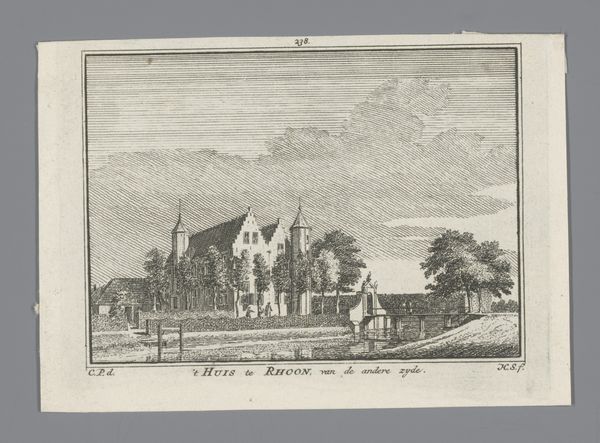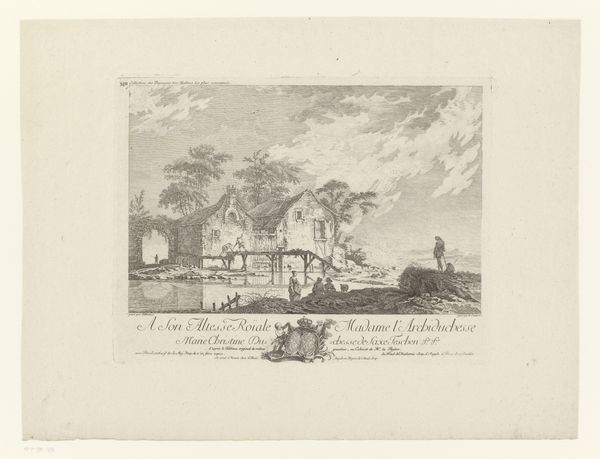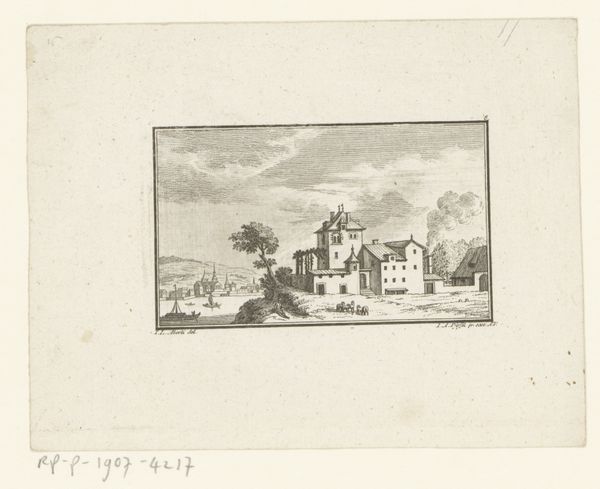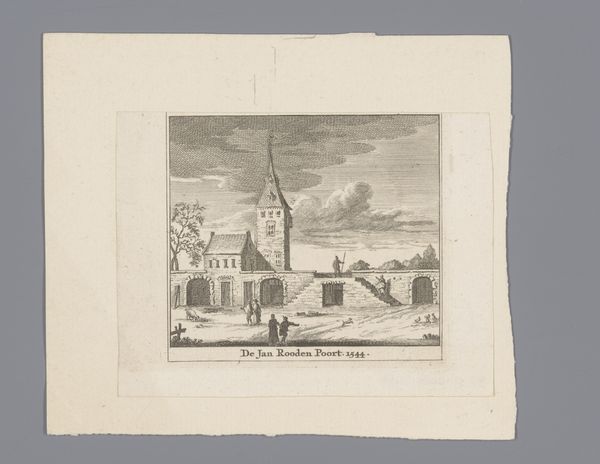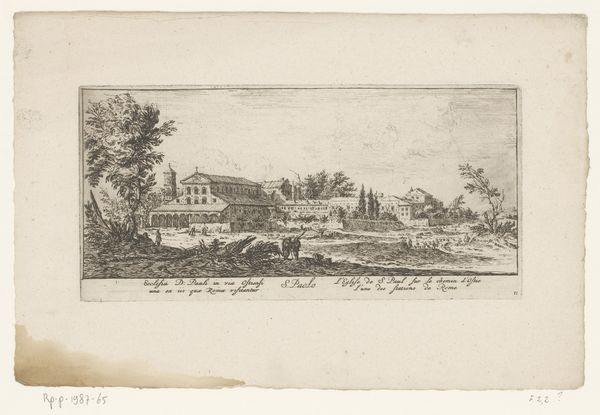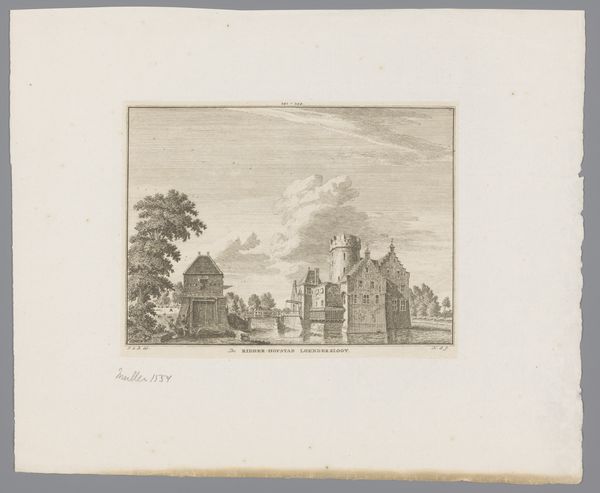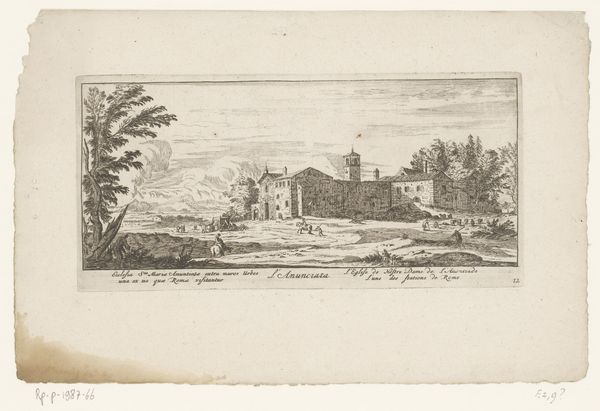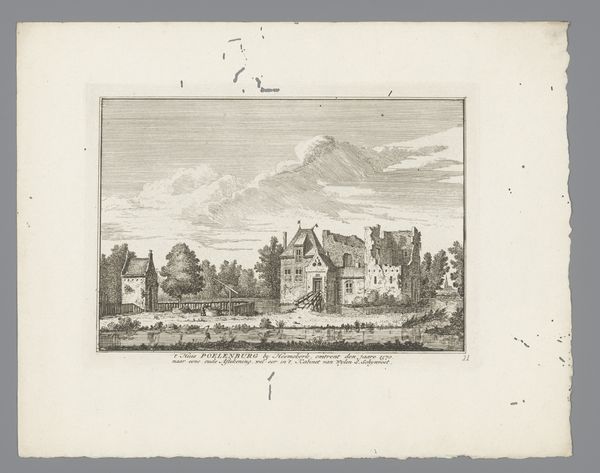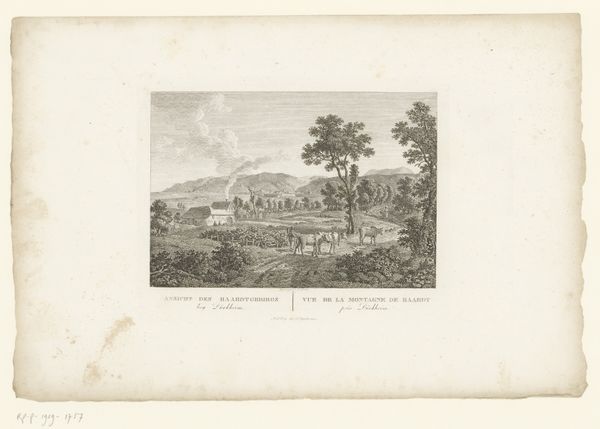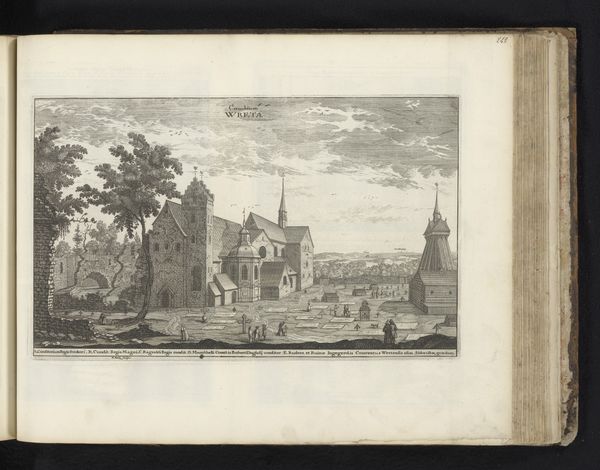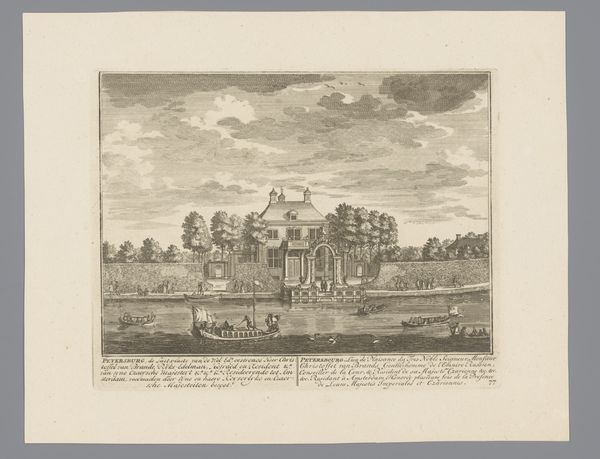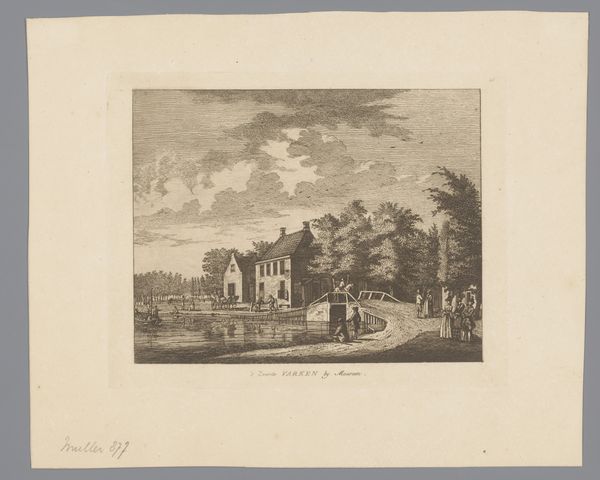
print, engraving
#
dutch-golden-age
#
ink paper printed
# print
#
landscape
#
genre-painting
#
engraving
Dimensions: height 160 mm, width 209 mm
Copyright: Rijks Museum: Open Domain
Editor: So, this is "Dorpsgezicht in Dwingeloo," a print made by Hendrik Spilman around 1770-1800. It's currently housed at the Rijksmuseum. I'm really struck by the texture of the printmaking process. What do you see in this work? Curator: I'm drawn to the relationship between labor and the land depicted here. Notice the deliberate act of creating this image: the scratching of the engraving tools into the metal plate, the physical act of printing. This mimics and mirrors the human activity etched into the landscape itself – from the architecture, implying construction, to the labor evident in the well-worn path, and domesticated setting. It’s a fascinating commentary on how we interact with, and therefore shape, our environment. Editor: That's a good point, thinking about the work that went into creating both the image and the scene. How does the choice of materials—ink on paper, specifically an engraving—play into your interpretation? Curator: The choice of printmaking, a method designed for reproducibility, invites questions of access and ownership. Prints like this allowed wider distribution of images, potentially democratizing art viewership. Consider who would have had access to this scene and its representation. Is it intended for those who labored there, or for a wealthier audience viewing from a distance? The black-and-white medium itself highlights the stark realities of labor versus leisure. Editor: I never considered the printmaking medium as inherently related to the socio-economic message! So it's about who can access it, and the message encoded in the material choice? Curator: Precisely. Spilman’s choices illuminate a social context often overlooked in traditional art historical narratives. How are these materials produced? Who controls the means of representation, and for what purpose? It is not enough to simply see. One must consider *how* one is seeing and who makes that possible. Editor: Thanks, I appreciate understanding this artwork's socio-economic implications in light of the material process, that is thought provoking!
Comments
No comments
Be the first to comment and join the conversation on the ultimate creative platform.

